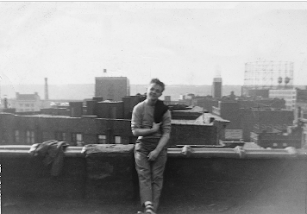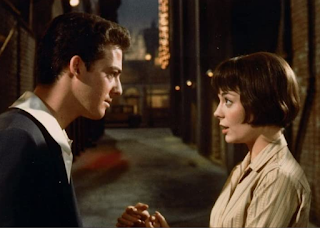Dink: “Welcome to the Orange and Black.”
Joey: “Huh?”
Dink: “It’s always Halloween.”
That’s one of my favorite lines from my debut novel PINS and this week –actually last month– is the 23rd anniversary of its publication. It’s not a very auspicious anniversary except to say that I should’ve posted this before Halloween, but I didn’t.
Holidays and all are good for annual reminders. But I’ve been really busy.
The reason Dink’s remark is one my favorite lines is because it’s multilayered. Dink is warning Joey, new to his also new school’s wrestling team, that he needs to prepare for the pressure and actual pain of training, to put on a mask to hide it, and cryptically, to hide being gay, which Dink intuits, because he is as well.
But it also has a secret autobiographical color code that means more to me.
You see, in high school, our school colors were also orange and black.
I didn't use the same mascot because of our high school mascot was an inanimate object; an arrow.
We did have a human mascot; Arry the Arrow. For pep rallies and football games, a girl from the cheer squad would play Arry with a big papier-mâché head, Sometimes a guy would do it, too. We used to have T-shirts with his illustration version resembling a little Mighty Mouse-style flying superhero.
But the arrow symbol was derived from the fact that in Northern Ohio, particularly near burial mounds, one used to be able to randomly find arrowheads sculpted from rock. Obviously now that you think about it, it’s a bit of cultural appropriation, but what mascot isn’t? Our junior high version was The Darts. The Arrows even made a list of problematic/racist mascots.
Of course, if you read the book PINS, you know that there’s a religious allegory in it that has a parallel to the tale of Saint Sebastian. I could’ve use the arrows as a symbol or a mascot in the book but it would’ve been overkill, with Joey/St. Sebastian being stuck with arrows metaphorically by his numerous wrestling injuries.
Besides, back in the new internet area, and even with the help of some history books, I didn’t find references to arrowheads as easily discovered in suburban New Jersey, despite the abundance of cities and towns with First Nation terms.
Instead I chose horses; colts in particular, because that was another symbol of animal symbol that runs throughout the book. These are all things that I don't care if you notice or appreciate or understand. They’re merely aspects woven into the book over the nine years it took me to complete it.
It’s the same for the holiday moment of November 1; All Saints Day, which is the actual date where the book starts. Everything before in Chapter 1 is past/previous tense by the mysterious unnamed narrator. The action actually begins on November 1, near the Day of the Dead for some Latino cultures.
I’m reminded of all this, because a few weeks ago I hosted the 12th –or 13th?– Lit Crawl event at Martuni’s, a bar in San Francisco where I’ve hosted Litquake events for a dozen years or so. I’ve lost track of how long it's been.
Anyway, I decided that I and the other authors would do book giveaways for trivia questions, mostly because I still have a box or two of PINS in my basement and I really want to get rid of them.
I’ve tried hand-selling them for cheap. I even went back on eBay for a while but that's tiresome. Since I closed my DBA Myrmidude Press, I can't reconnect with wholesale distributors because they’re not interested in a 23-year-old book that’s already sold more than 5500 copies. So basically, according to Baker and Taylor and Ingram, my book is out-of-print.
But it’s not; if you want a free copy just mail me the postage, I guess. It would be great if some smart literature professor added it to their syllabus, then I could ship an entire box, which I did several times years back.
One of the curses of self-publishing old school-style is that, when you print out 6000 copies, you do end up having some leftovers. But after that, print on demand led to an easier formatting and I don't have boxes of other books lying in wait.
There are so many newfangled ways of getting a book out that first-time self-published authors can access. I’m a bit envious actually of their naïveté and not understanding how the old school formatting works; hiring a printer, shipping cartons by UPS, etc. I’ve described that elsewhere in other posts.
But even six books later –actually seven including the short story anthology, and three audiobooks and a play make a lucky 13, and the German translation of PINS makes 14– I still get people who tag me with the wrestling badge of honor.
I recently posted an old Halloween picture of me as Wolverine from the X-Men movies. I even sported it at a Philadelphia literary conference in 2000 when I was coasting on PINS’ success.
Yet just today some literary friend had to make a wrestling comparison as if I'm still running around in the singlet at age 60. I’m not embarrassed by my age. It’s in my Wikipedia entry.
(Truth: the last time I wore a singlet for actual competition was 2006, other than a later Halloween costume as a wrestler/werewolf.)
But to still be tagged by something you completed more than two decades ago is a bit limiting. I still have people who complement me on that book, but haven’t read any of the others, which is a bit frustrating.
So, please read this book and then maybe the six or seven others I’ve cranked out over the years. I hope you had a happy Halloween and you have a nice autumn and I hope to post more frequently in the future now that I’ve discovered the magic of voice-to-text. And buy my damn books, bub!

















